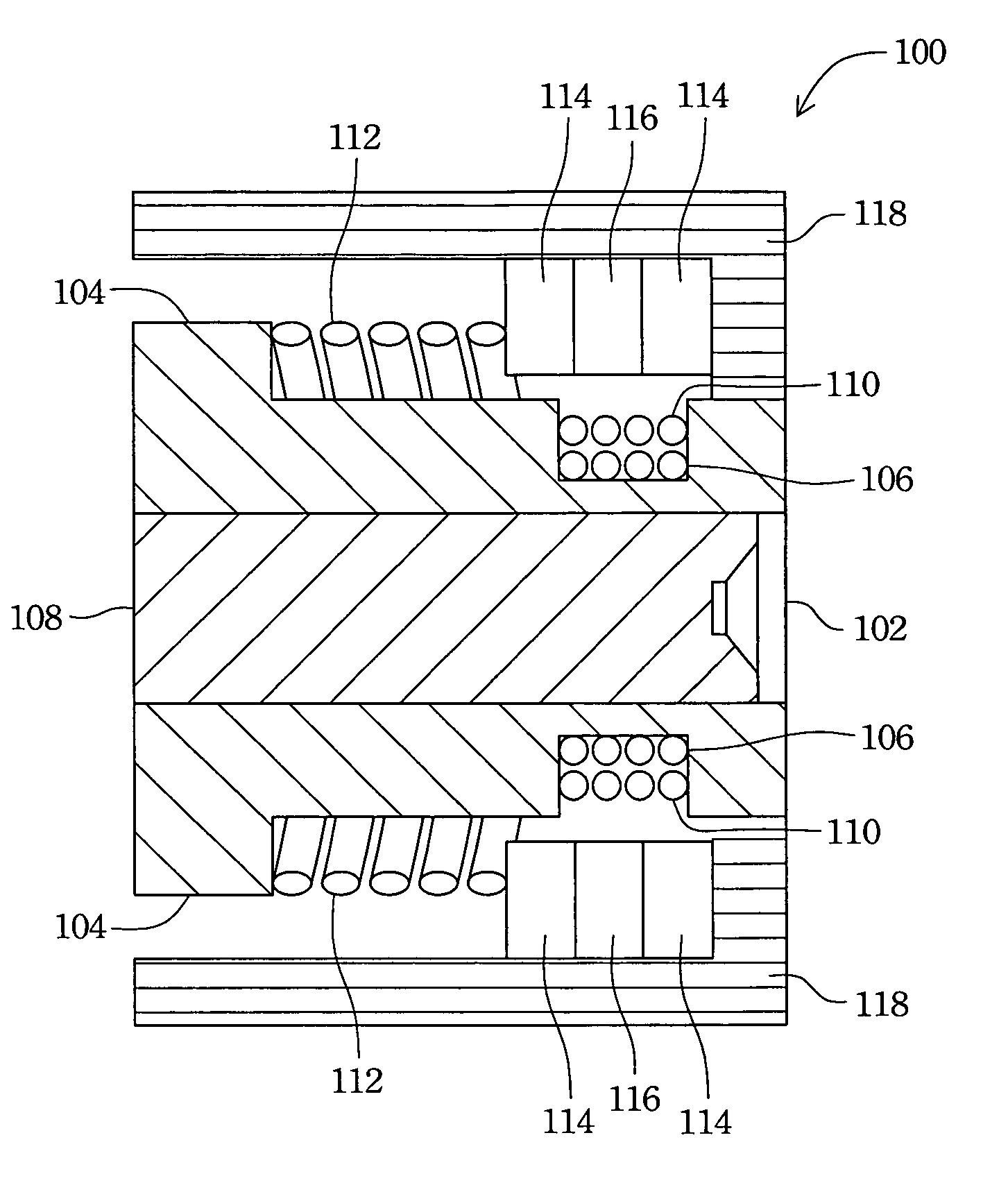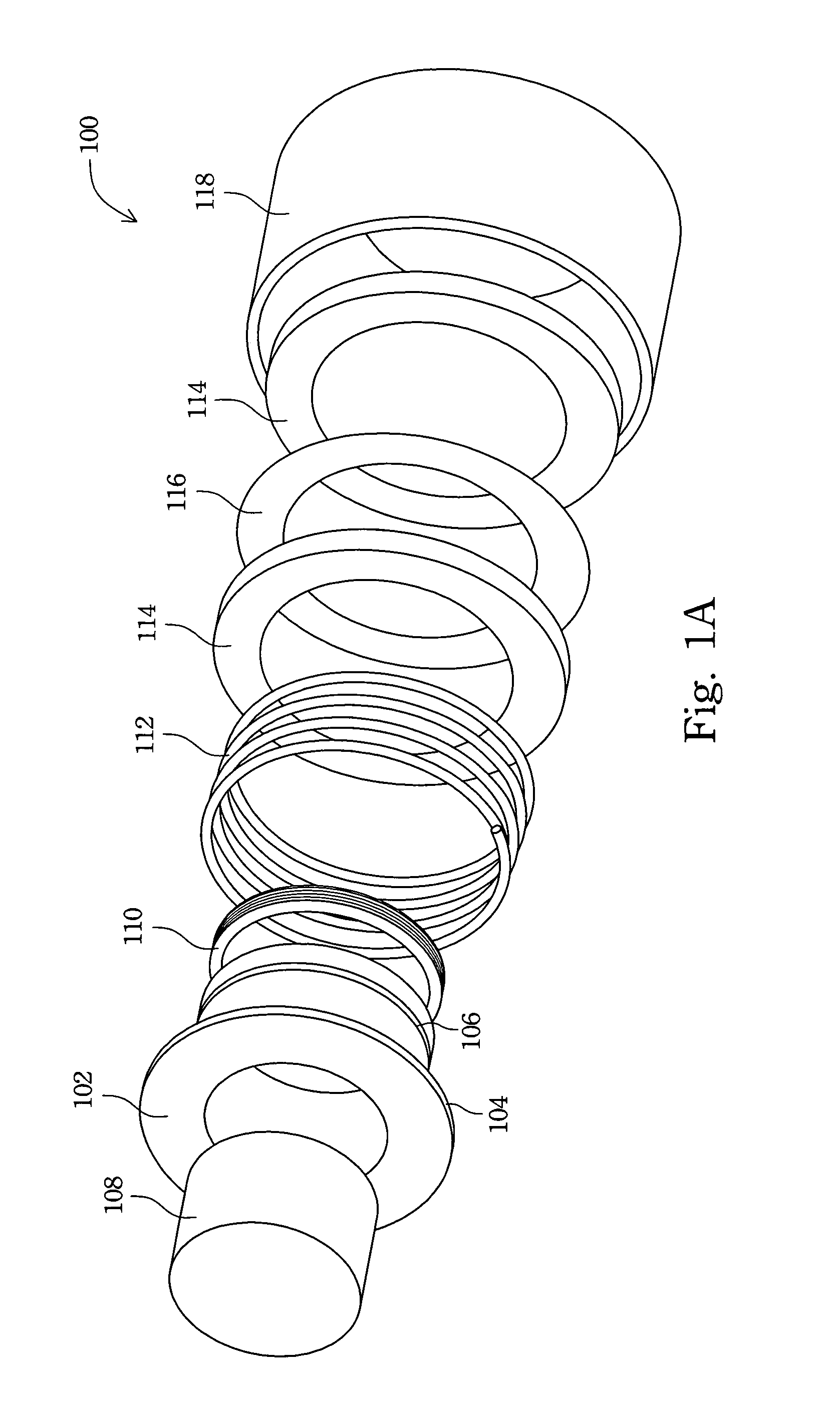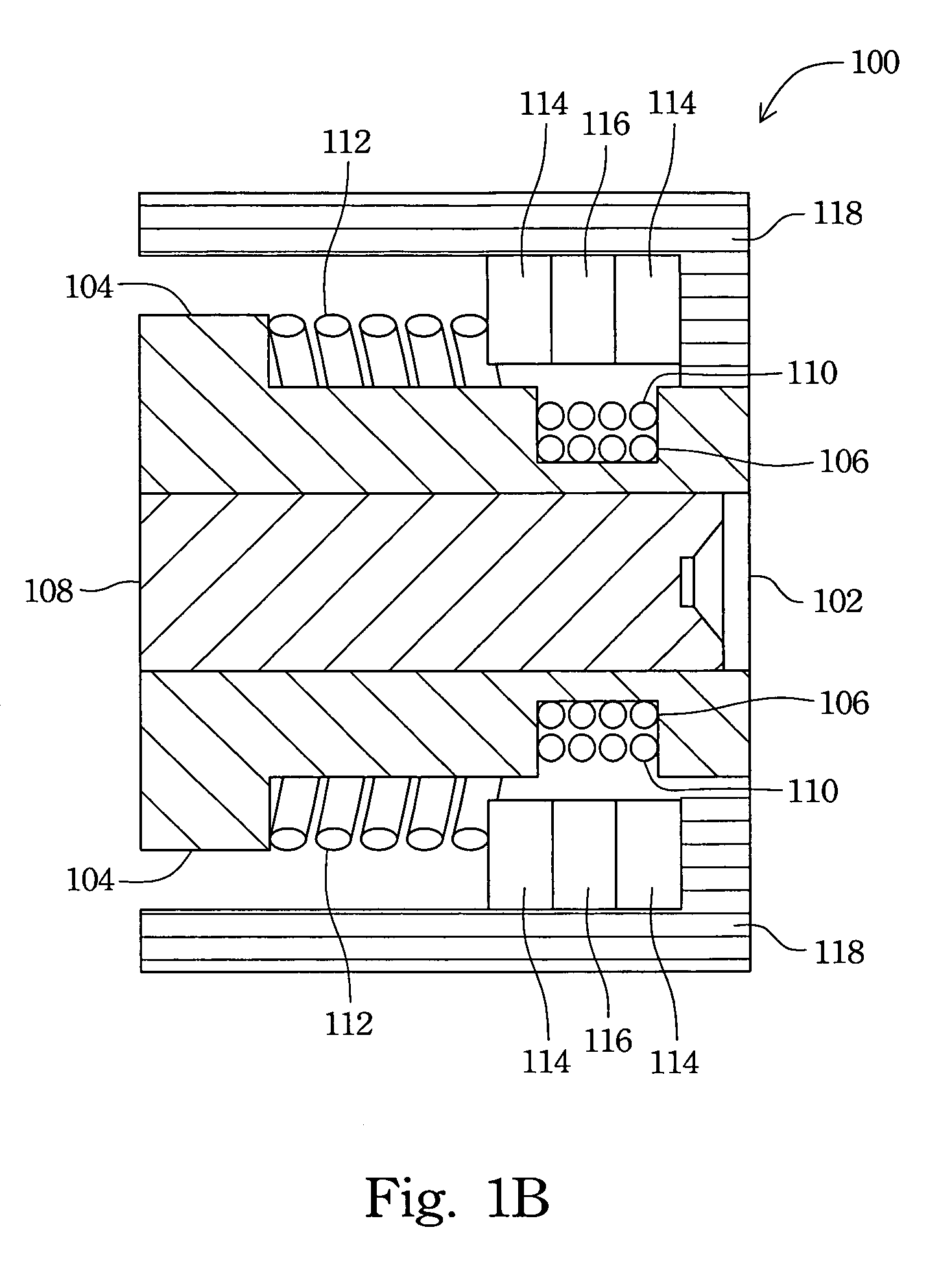Driving mechanism for a camera lens
a technology of driving mechanism and camera lens, which is applied in the direction of mountings, optics, instruments, etc., can solve the problems of inconvenient use, inconvenient use, and inability to apply in portable products such as mobile phones, and achieve the effect of good control ability
- Summary
- Abstract
- Description
- Claims
- Application Information
AI Technical Summary
Benefits of technology
Problems solved by technology
Method used
Image
Examples
Embodiment Construction
[0021]Reference will now be made in detail to the present preferred embodiments of the invention, examples of which are illustrated in the accompanying drawings. Wherever possible, the same reference numbers are used in the drawings and the description to refer to the same or like parts.
[0022]The basic concept of the present invention is using an active force induced by the interaction of electric current and the magnetic line of force to control the position of a lens. In this way, the lens can be linearly driven forward and backward without any additional part motion but with a high positioning accuracy and by simple control.
[0023]FIG. 1A illustrates an exploded view of a lens driving mechanism according to an embodiment of the present invention, showing the main elements of a lens driving mechanism 100, including a lens cylinder 102, a lens 108, a conductor coil 110, a coil spring 112, two magnetic bodies 114, an inner yoke 116 between the magnetic bodies 114 and a mechanism cyli...
PUM
 Login to View More
Login to View More Abstract
Description
Claims
Application Information
 Login to View More
Login to View More - R&D
- Intellectual Property
- Life Sciences
- Materials
- Tech Scout
- Unparalleled Data Quality
- Higher Quality Content
- 60% Fewer Hallucinations
Browse by: Latest US Patents, China's latest patents, Technical Efficacy Thesaurus, Application Domain, Technology Topic, Popular Technical Reports.
© 2025 PatSnap. All rights reserved.Legal|Privacy policy|Modern Slavery Act Transparency Statement|Sitemap|About US| Contact US: help@patsnap.com



